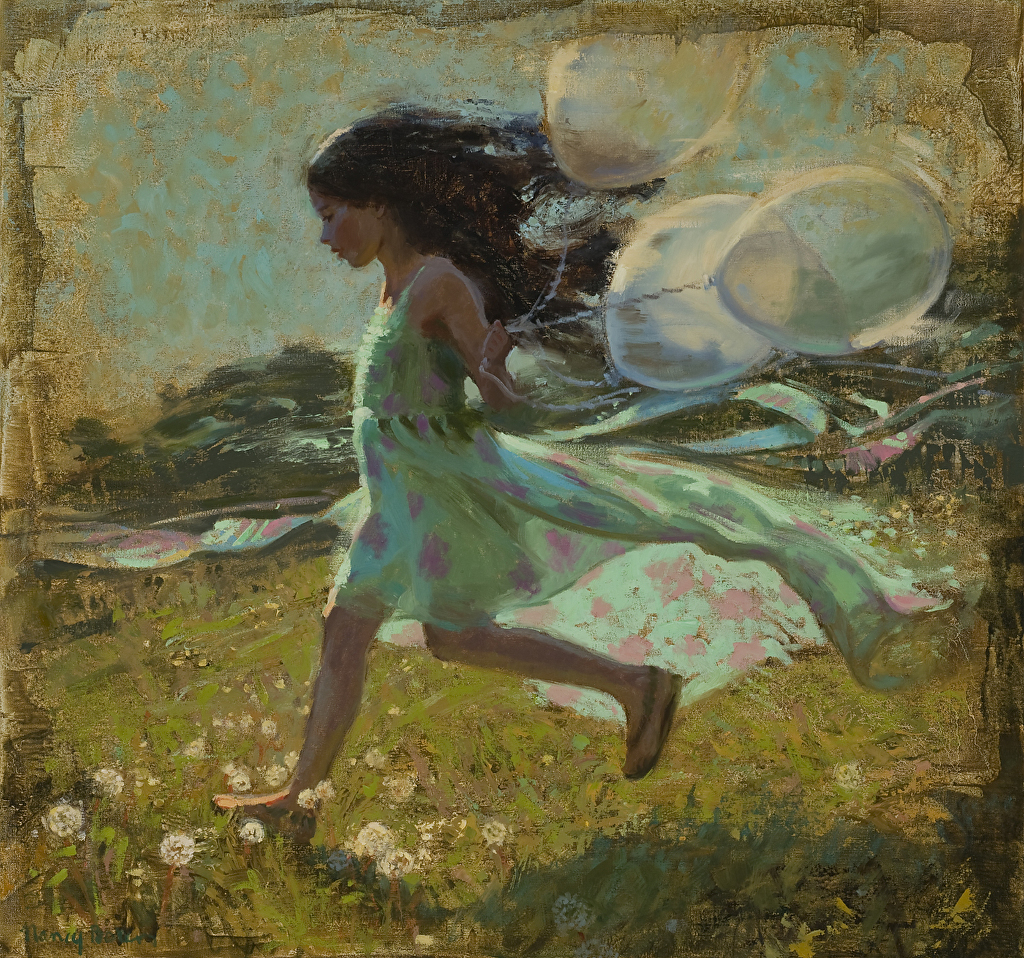Explore Classic Art Pieces Oil Paintings for Sale Today
Explore Classic Art Pieces Oil Paintings for Sale Today
Blog Article
Checking out Everything About Oil Paintings: A Guide to Understanding Their Appeal and Value
Oil paints have mesmerized audiences for centuries, supplying a glimpse right into the artistic proficiency of numerous ages. Their rich background is linked with cutting-edge strategies and profound psychological expression. Comprehending the materials and approaches behind these art work can enhance appreciation. In addition, the market for oil paintings presents opportunities for enthusiasts and financiers alike. As one discovers this interesting world, the inquiry emerges: what makes an oil painting genuinely useful?
The History of Oil Painting: A Trip Through Time
Oil painting has origins that date back to ancient times, it absolutely prospered throughout the Renaissance, when musicians found its flexibility and abundant color possibility. Early examples can be mapped to the 7th century, with techniques evolving especially across societies. The tool ended up being noticeable in Northern Europe in the 15th century, especially via the works of artists like Jan van Eyck, that pioneered its use for thorough realistic look and vibrant colors. This duration marked a departure from tempera paints, permitting for greater deepness and appearance. As oil paint spread, it influenced plenty of artists, bring about work of arts by prominent figures such as Leonardo da Vinci and Rembrandt. The medium's tradition proceeds, forming the art world well into modern times.
Comprehending Oil Repaints: Products and Techniques
As musicians discover the world of oil paints, they come across a varied array of materials and methods that specify this tool. The key parts of oil paint include pigments, which supply shade, and drying out oils, such as linseed, that bind the pigments and facilitate application. Various additives can customize the paint's structure and drying time, improving adaptability. Strategies like glazing, where clear layers are accumulated, and impasto, which involves using thick paint, permit for different visual effects. Furthermore, making use of brushes, combination knives, and even fingers can produce special textures and finishes. Comprehending these materials and methods allows artists to fully express their creativity and achieve the wanted influence in their art work.
The Role of Shade in Oil Paintings
Color plays a critical role in oil paints, affecting both visual allure and psychological resonance. Recognizing shade concept basics, consisting of the connections between tones, can enhance a musician's capacity to communicate state of mind and atmosphere. Additionally, understanding color blending methods enables better depth and splendor in a painting's scheme.

Color Theory Basics
Understanding color concept is essential for musicians dealing with oil paints, as it develops the foundation for producing visually appealing and harmonious make-ups. Color concept includes the study of just how colors interact, the shade wheel, and the relationships in between primary, second, and tertiary colors. Musicians utilize corresponding colors to enhance contrasts and produce centerpieces, while comparable colors promote unity and cohesiveness within an item. Furthermore, the principles of warm and cool colors affect the perception of deepness and area in a painting. Understanding these concepts enables musicians to manipulate shade successfully, assisting the customer's eye and interacting their designated message. Mastery of color concept ultimately enhances a musician's capacity to convey feelings and concepts through their work.
Psychological Influence of Color
The emotional effect of shade in oil paintings plays a vital duty in how customers connect and perceive with artwork. Shades stimulate specific feelings and moods, influencing the customer's mood. For example, warm shades like reds and oranges can develop a feeling of warmth and power, while awesome tones such as blues and environment-friendlies often evoke peace or introspection. Artists tactically select color combinations to improve narrative aspects, directing the audience's emotional journey. The saturation and contrast of colors further amplify these results, attracting focus and creating focus. Eventually, the interplay of colors in oil paints not only enhances their visual allure however likewise works as a powerful tool for psychological expression, enhancing the customer's experience and analysis.
Shade Combining Techniques
While lots of facets of oil paint add to the general structure, grasping color mixing methods is vital for achieving wanted results and depth. Color blending can be come close to with different methods, consisting of the subtractive and additive processes. Additive blending includes combining colors of light, while subtractive mixing depends on pigments, where colors blend to produce new shades. Musicians commonly use a limited combination to create unified works, understanding the connections between main, secondary, and tertiary colors. Methods such as glazing and scumbling further boost depth and luminance. By skillfully blending shades, an artist can stimulate emotions, develop prime focus, and attain a sense of realistic look, ultimately raising the paint's aesthetic and psychological effect.
Famous Oil Painters and Their Iconic Works

Well known for their mastery of color and method, oil painters have actually created several of one of the most well known art work in history. Prominent musicians like Vincent van Gogh captivated audiences with his stirring brushwork in "Starry Evening," while Claude Monet's "Impact, Sunrise" laid the groundwork for Impressionism. Leonardo da Vinci's "Mona Lisa" remains an enduring symbol of artistic genius, showcasing his skill in capturing human expression. Meanwhile, Rembrandt's "The Night Watch" illustrates his innovative usage of light and darkness. Various other significant numbers include Pablo Picasso, who revolutionized modern-day art with his vibrant trial and error in jobs like "Les Demoiselles d'Avignon," and Georgia O'Keeffe, whose vibrant representations of landscapes and blossoms aided define American modernism. Each musician's one-of-a-kind design contributed significantly to the oil painting landscape.
Just how to Examine the High Quality of an Oil Painting
Examining the high quality of an oil paint includes a careful assessment of workmanship strategies, in addition to an analysis of shade and make-up. Observing brushwork, layering, and the application of paint can expose the artist's ability level. Furthermore, the interplay of colors and the total setup of components add substantially to the paint's visual value.
Evaluating Craftsmanship Techniques
A meticulous analysis of workmanship methods is important for identifying the quality of an oil paint. Evaluators ought to first check out the application of paint; thick, distinctive brushstrokes may suggest a skilled hand, while extremely consistent applications could show an absence of depth. oil paintings for sale. The layering strategy is likewise important; the presence of lusters and varied density can improve luminosity and intricacy. Additionally, the quality of the materials made use of, such as the canvas and pigments, plays a significant function in resilience and total visual. Attention to information in components like edges and changes in between colors shows the musician's dedication to their craft. Eventually, these strategies add to the painting's psychological impact and market price, acting as signs of the musician's skill and intent
Examining Shade and Make-up
While assessing the top quality of an oil painting, one need to concentrate on the interplay of shade and make-up, as these elements are fundamental to the artwork's general impact. Shade selections can establish and evoke emotions mood; therefore, the musician's combination should be analyzed for harmony and comparison. A healthy composition directs the viewer's eye and creates a sense of unity. Musicians frequently utilize strategies like the rule of thirds or leading lines to improve visual rate of interest. Additionally, making use of light and darkness can include depth, boosting the three-dimensionality of the painting. Ultimately, an effective oil paint weds color and composition, involving the visitor and welcoming a much deeper appreciation of the artist's vision and technique.
Caring for and Preserving Oil Paintings
Correct care and conservation of oil paintings is important for preserving their honesty and longevity. To protect these artworks, it is essential to present them away from direct sunlight, which can cause fading and discoloration. Maintaining a stable environment with regulated temperature level and humidity more aids in protecting against damage. Cleansing must be done carefully using a soft, dry fabric, preventing any type of severe chemicals that can harm the paint or varnish. Regular assessments for signs of degeneration, such as cracking or flaking, are advisable. When transporting or keeping oil paints, appropriate cushioning and framing are required to avoid physical injury. Inevitably, diligent care adds to the aesthetic allure and worth of oil paints gradually.
The Marketplace for Oil Paints: Accumulating and Spending
Comprehending the marketplace dynamics for oil paintings is necessary for collection agencies and investors alike. The value of these art work is affected by various aspects, including the artist's credibility, historic value, and present trends. Enthusiasts typically look for pieces that reverberate personally while thinking about potential gratitude in worth. Public auctions and galleries function as key places for trading, with prices changing based on demand and rarity. Buying oil paintings calls for research into the market, in addition to an understanding of credibility and provenance. Furthermore, emerging artists may provide possibilities for significant returns, while established names can command high prices. Generally, a tactical method to gathering can produce both visual enjoyment and economic rewards.

Frequently Asked Inquiries
What Are the Environmental Influences of Oil Painting Materials?
The environmental effects of oil painting materials consist of the release of unstable organic substances (VOCs), unsafe waste generation, and source extraction for pigments. These variables add to air pollution and environmental degradation, raising worries amongst environmentally conscious musicians and consumers.
How Do Different Canvases Impact Oil Paint Results?
Various canvases influence oil paint results considerably. Texture, absorbency, and surface high quality can alter paint application, drying out times, and shade vibrancy. Artists usually pick details canvases to more info accomplish desired impacts and improve their creative expression.
Can Oil Paintings Be Restored if Harmed?
If damaged, Oil paintings can without a doubt be recovered. Expert conservators make use of different methods to repair splits, tidy surfaces, and address staining, ensuring that the artwork keeps its initial charm and worth for future generations.
What Are the Signs of an Initial Oil Painting?
The signs of an original oil paint include visible brush strokes, appearance variations, and an unequal canvas weave (oil paintings for sale). Additionally, authenticity may be confirmed via provenance, trademarks, and the existence of a varnish layer distinct to oil tools
Exactly How Has Modern Technology Influenced Modern Oil Painting Techniques?
Technology has actually substantially affected contemporary oil painting strategies by presenting electronic tools for preparation, boosted materials for structure and durability, and on-line systems for sharing and marketing art, consequently broadening artists' imaginative possibilities and target market reach. Oil painting has roots that date back to old times, it genuinely thrived throughout the Renaissance, when musicians discovered its versatility and rich color potential. The psychological influence of color in oil paintings plays an essential duty in how visitors attach and regard with art work. While numerous facets of oil painting contribute to the general structure, mastering shade blending techniques is vital for achieving preferred impacts and depth. Reviewing the top quality of an oil painting entails a cautious assessment of workmanship methods, as well as an evaluation of color and composition. While reviewing the high quality of an oil paint, one should focus on the interplay of color and make-up, as these components are essential to the art work's total effect.
Report this page